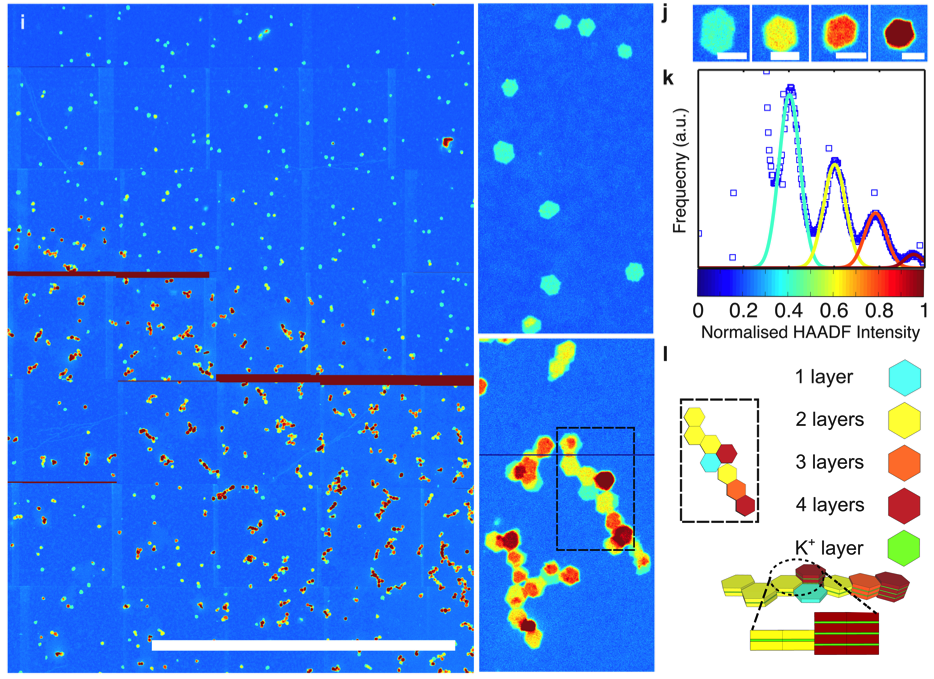At INE, we are studying the functional properties of a various range of nanomaterials and we probe in real-time how they change upon application of external stimuli. Below are some examples of our current research activities, which are focused on energy related applications.
Oxygen Electrocatalysis
Understanding the active sites during the reactions is key to designing protocols for next generation electrocatalysts. Particularly for water splitting applications, the sluggish oxygen evolution and reduction reactions (OER and ORR) are the bottleneck that limits the efficiency of water electrolysis. We use in situ transmission electron microscopy (TEM) based techniques that provide the means to investigate in detail the structural and chemical changes during these processes for a range of oxide catalysts including perovskites, spinels, and oxy-hydroxides.
Further reading: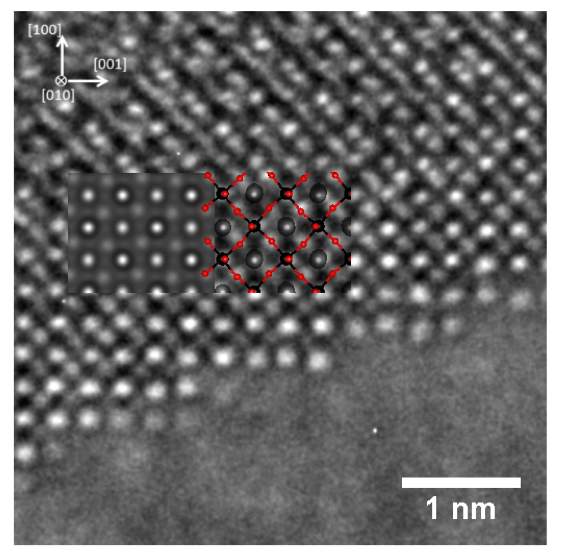
Lithium Ion Batteries
Our aim is to address fundamental questions governing the functionality of batteries by applying and developing in situ nanoanalytical transmission electron microscopy (TEM) techniques and performing postmortem measurements with chemical analysis techniques. We reproduce the electrochemical process of bulk battery testing in a fluidic, micro-sized cell inside a transmission electron microscope (in situ TEM) and we perform cycling experiments while acquiring information on the transformations of the electrode materials.
Further reading: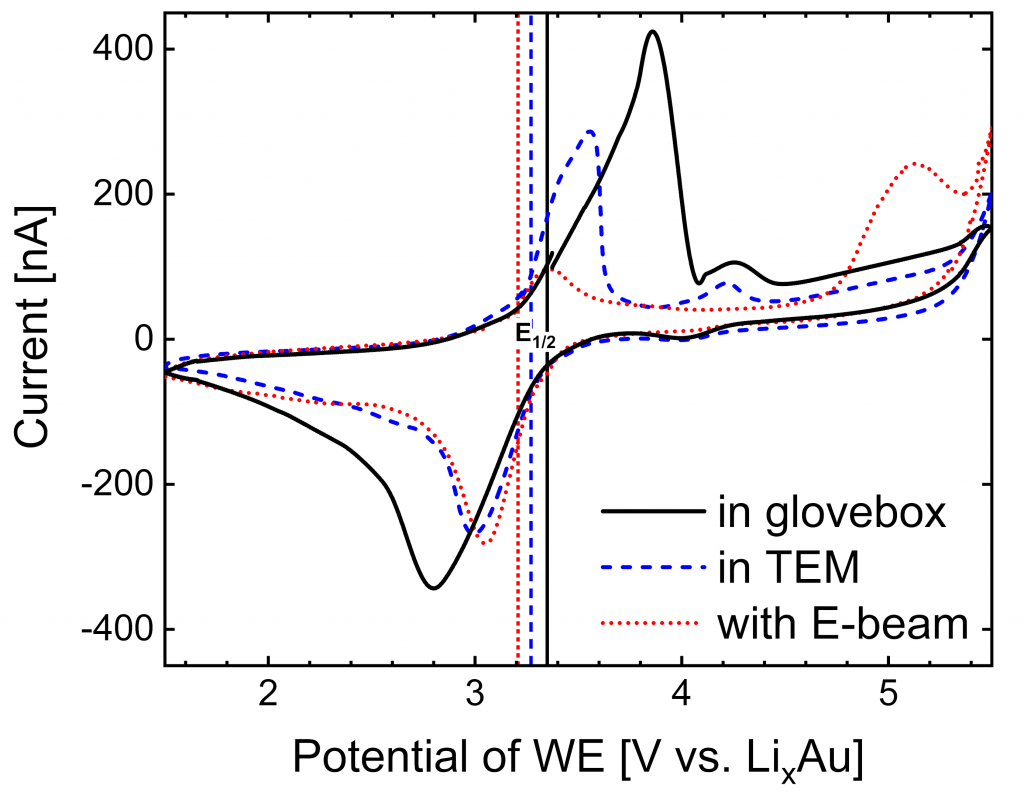
Proton Exchange Membrane Fuel Cells
For cost and performance competitiveness, further developments of the proton exchange membrane fuel cells are required at low catalyst loading. Specifically, we monitor the properties of the membrane electrode assemblies (MEA), where the reactions occur, and the microporous layer (MPL), which is responsible for efficiently supplying and removing reactants and products. We use 3D electron microscopy techniques to quantitatively analyse water percolating paths and ionomer distributions, and couple them with information gained by performing operando experiments.
Further reading: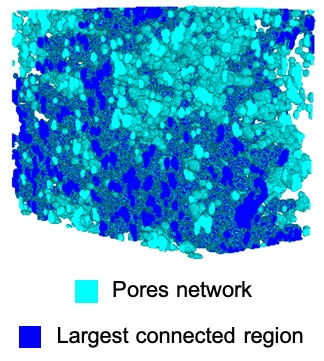
Ferroelectrics
We perform fundamental studies of phase transformations in ferroelectrics as they occur at the nanoscale and relate them with macrosized effects. We explore the mechanisms of domain wall movements under applied electric field at different temperatures, including cryogenic temperatures.
Further reading: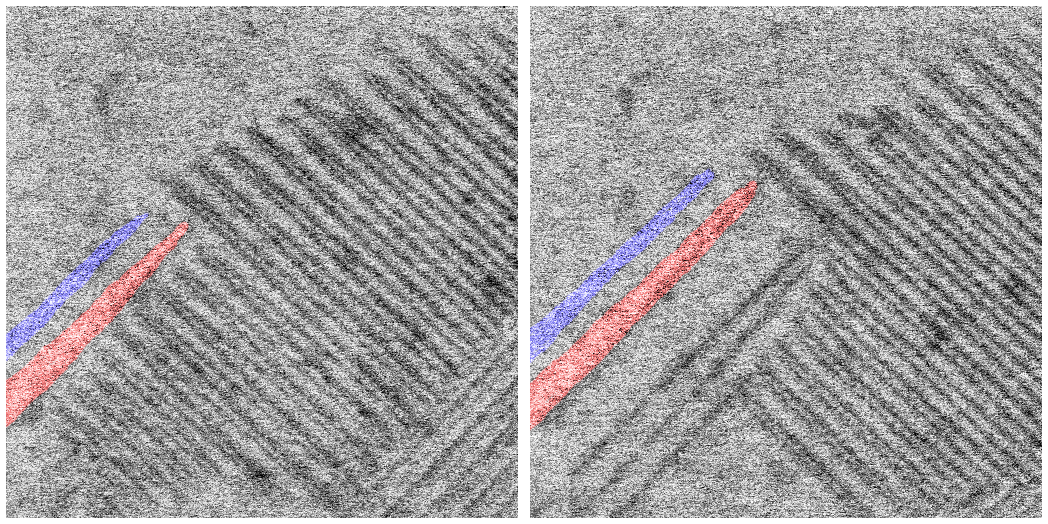
2D Materials
The industrial use of 2D materials requires preservation of the materials quality defined by the properties needed for each targeted application. We look into the self-assembly and the electric-field-induced assembled 2D flakes from ionic solutions that are promising for a variety of applications, including their potential use as anodes for batteries. Additionally, we probe the defects in 2D materials and their dynamic behaviour (either growth or transport) under controlled electron dose rates and elevated temperatures.
Further reading: